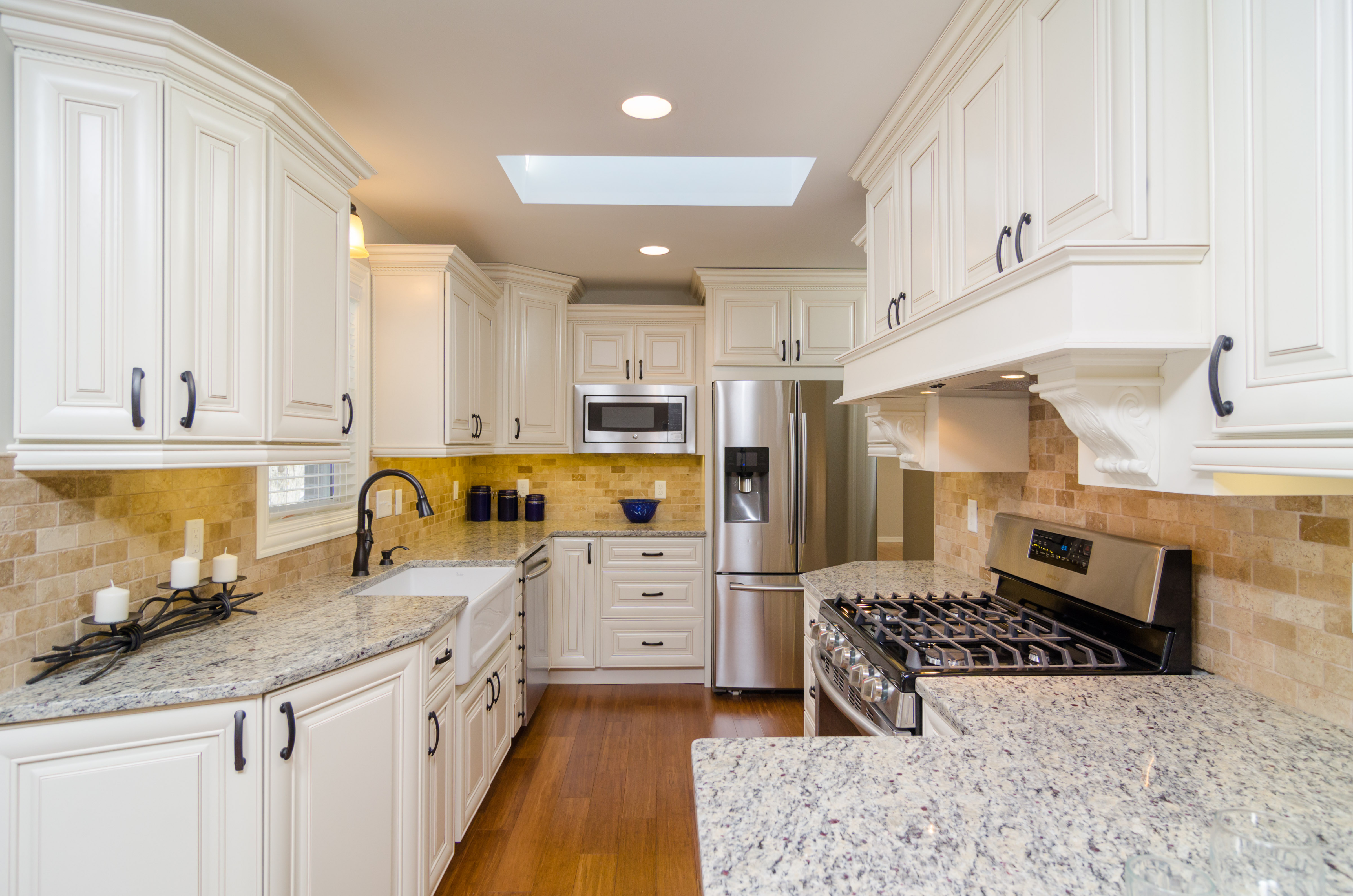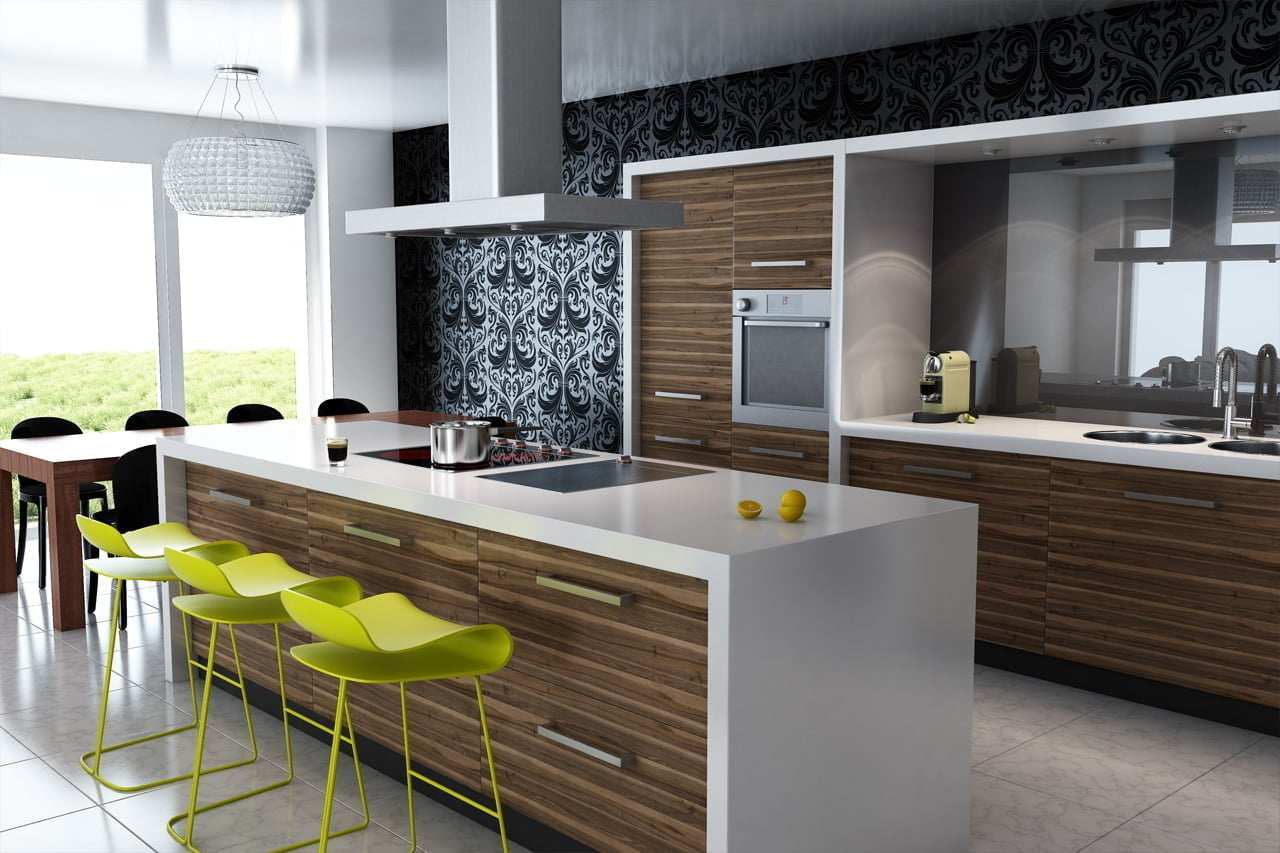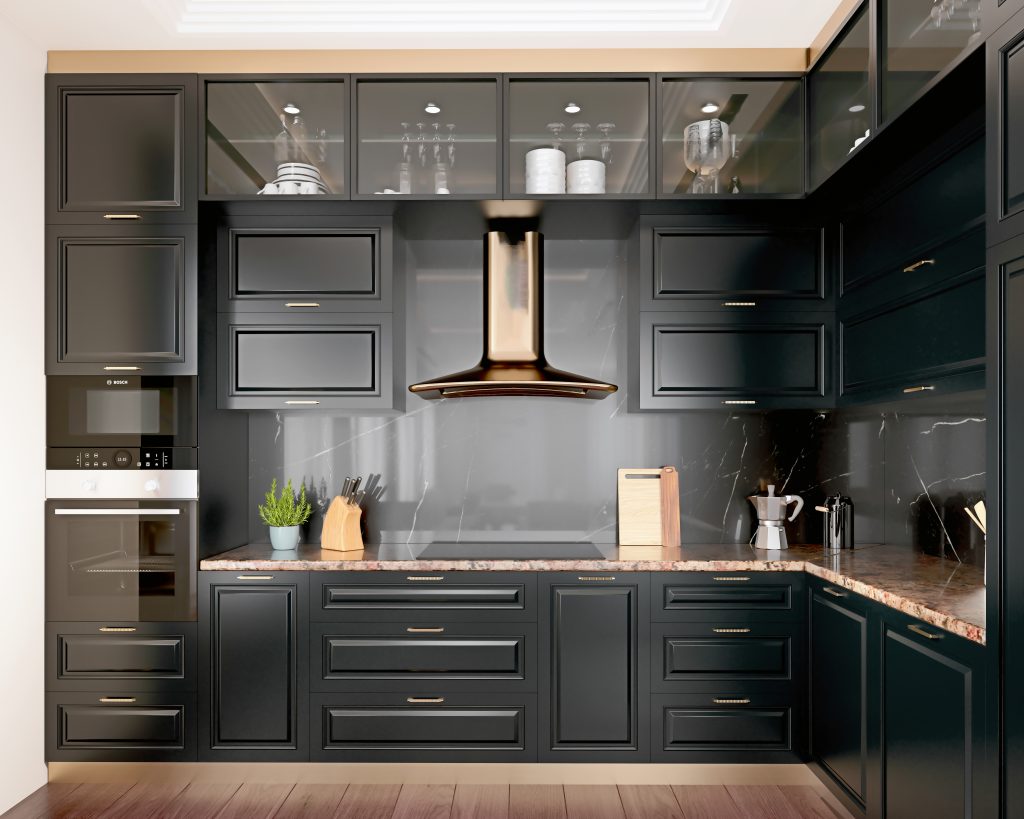Design Considerations: Entire Wall Of Kitchen Cabinets

An entire wall of kitchen cabinets can be a bold design choice, offering both advantages and disadvantages. It’s essential to weigh these factors carefully before committing to this design.
Advantages and Disadvantages of a Wall of Cabinets
A wall of cabinets provides ample storage space, maximizing kitchen functionality. This can be particularly beneficial in smaller kitchens where space is limited. However, it can also make the kitchen feel cramped or overwhelming, especially if the cabinets are not carefully designed and integrated into the overall layout.
- Advantages:
- Maximizes storage space, ideal for smaller kitchens or those with a lot of belongings.
- Provides a cohesive and streamlined aesthetic, creating a clean and organized look.
- Offers a variety of design options, allowing for customization to match the kitchen’s style.
- Disadvantages:
- Can make the kitchen feel smaller and more enclosed, especially in smaller spaces.
- May require careful planning to ensure sufficient counter space and adequate work areas.
- Can be expensive to install and customize, especially if using high-end materials.
Examples of Kitchen Layouts with a Wall of Cabinets
There are numerous kitchen layouts that incorporate a wall of cabinets, each with its own advantages and considerations. Some popular examples include:
- Galley Kitchen: This layout features two parallel runs of cabinets, often with a wall of cabinets on one side and a countertop and appliances on the other. This design is ideal for smaller spaces, maximizing storage and counter space within a limited footprint.
- L-Shaped Kitchen: This layout features two runs of cabinets that meet at a right angle, creating an L-shape. One of the runs can be a full wall of cabinets, providing ample storage while leaving the other run open for counter space and appliances.
- U-Shaped Kitchen: This layout features three runs of cabinets that form a U-shape, creating a central work area. One of the runs can be a full wall of cabinets, offering extensive storage and a sense of enclosure.
Designing a Kitchen with a Wall of Cabinets
Designing a kitchen with a wall of cabinets requires careful consideration of space, functionality, and aesthetics. Here’s a sample layout that incorporates a wall of cabinets:
- Kitchen Dimensions: Assume a 12′ x 14′ kitchen space.
- Wall of Cabinets: The wall of cabinets would occupy one of the 14′ walls, with a length of approximately 12′.
- Materials: Consider using durable materials such as solid wood for the cabinets and countertops.
- Appliance Placement: The refrigerator and stove could be placed on the opposite wall, with a countertop in between.
- Island: A small island could be placed in the center of the kitchen, providing additional counter space and seating.
- Lighting: Incorporate ample lighting, including overhead fixtures and under-cabinet lighting.
Visual Representation of a Kitchen with a Wall of Cabinets
Imagine a kitchen with a clean and modern aesthetic. The wall of cabinets runs along one side of the room, extending from floor to ceiling. The cabinets are made of a warm, natural wood, with sleek, minimalist hardware. The countertop is made of a durable, easy-to-clean material, such as quartz or granite. The refrigerator and stove are placed on the opposite wall, creating a functional and efficient workspace. A small island in the center of the room provides additional counter space and seating. The kitchen is well-lit, with overhead fixtures and under-cabinet lighting creating a warm and inviting atmosphere.
Functionality and Storage

A wall of kitchen cabinets is a significant investment, and its functionality and storage capabilities are paramount. This section explores the diverse storage options available, offers tips for maximizing space, identifies common integrated appliances, and highlights the benefits of incorporating specific features.
Types of Storage Options
A wall of kitchen cabinets provides a multitude of storage solutions, catering to diverse needs and preferences.
- Base Cabinets: These are the foundational units, offering ample storage for pots, pans, and other bulky items. They are typically equipped with drawers and shelves, offering flexibility in organizing various items.
- Wall Cabinets: These cabinets are mounted above countertops, providing overhead storage for dishes, glassware, and infrequently used items. They come in various sizes and configurations, including upper cabinets with glass doors for display purposes.
- Tall Cabinets: Also known as pantry cabinets, these tall units offer substantial vertical storage for groceries, appliances, and other bulk items. They often include adjustable shelves, pull-out drawers, and even built-in pantries.
- Specialty Cabinets: These cabinets are designed for specific purposes, such as spice racks, corner cabinets, and appliance garages. They cater to specialized storage needs and enhance kitchen functionality.
Maximizing Storage Space
Efficiently utilizing the available space in a wall of cabinets is crucial for maximizing functionality.
- Vertical Storage: Utilize the vertical space by installing adjustable shelves, stackable containers, and tiered organizers.
- Pull-Out Drawers: These drawers provide easy access to items stored at the back of cabinets, eliminating the need to rummage through stacks.
- Lazy Susans: These rotating platforms are ideal for corner cabinets, maximizing accessibility to items stored in hard-to-reach areas.
- Wall-Mounted Storage: Utilize wall space by installing shelves, hooks, and magnetic strips for additional storage.
Integrated Appliances
A wall of cabinets can seamlessly integrate various appliances, enhancing kitchen functionality and aesthetics.
- Refrigerators: Integrated refrigerators are typically flush with the cabinetry, creating a cohesive and streamlined look.
- Dishwashers: Integrated dishwashers blend seamlessly with the cabinetry, offering a clean and unobtrusive design.
- Ovens: Integrated ovens, including wall ovens and double ovens, can be seamlessly incorporated into the cabinetry, creating a built-in look.
- Microwaves: Integrated microwaves are typically housed within upper cabinets, offering a convenient and space-saving solution.
Benefits of Specific Features
Incorporating specific features within a wall of cabinets can significantly enhance functionality and organization.
- Pull-Out Drawers: These drawers provide easy access to items stored at the back of cabinets, eliminating the need to rummage through stacks.
- Lazy Susans: These rotating platforms are ideal for corner cabinets, maximizing accessibility to items stored in hard-to-reach areas.
- Spice Racks: Dedicated spice racks provide convenient and organized storage for spices, eliminating clutter and maximizing efficiency.
Style and Aesthetics

A kitchen with an entire wall of cabinets offers a unique opportunity to create a captivating and personalized aesthetic. The design choices you make will significantly influence the overall feel and ambiance of your kitchen.
Cabinet Styles
The style of your cabinets will set the tone for the entire kitchen. Here are some popular options:
- Modern: Characterized by clean lines, sleek surfaces, and minimal ornamentation. Modern cabinets often feature high-gloss finishes, integrated handles, and a focus on functionality.
- Traditional: Embraces classic design elements, such as ornate details, raised panels, and decorative hardware. Traditional cabinets often have a warm and inviting feel, with finishes like cherry, maple, or painted wood.
- Farmhouse: Inspired by rustic charm, farmhouse cabinets typically feature distressed wood, open shelving, and a focus on natural materials. They often incorporate elements like beadboard detailing, exposed hardware, and a neutral color palette.
- Contemporary: Blends modern and traditional elements, resulting in a sophisticated and timeless look. Contemporary cabinets often feature clean lines, subtle details, and a mix of materials like wood, metal, and glass.
Impact of Materials, Finishes, and Hardware
The choice of materials, finishes, and hardware plays a crucial role in shaping the aesthetic of your kitchen cabinets.
- Materials: Wood, like cherry, maple, or oak, is a popular choice for cabinets, offering durability, warmth, and natural beauty. Other options include laminate, which is budget-friendly and comes in various finishes, and thermofoil, which is known for its moisture resistance and durability.
- Finishes: Cabinet finishes can range from sleek and modern to rustic and traditional. Popular options include painted finishes, stained wood, and high-gloss laminates. The finish can significantly impact the overall look and feel of your cabinets.
- Hardware: Cabinet hardware, such as knobs and pulls, can add a touch of personality and style. Consider the style of your cabinets and the overall aesthetic of your kitchen when selecting hardware. Modern kitchens often feature sleek, minimalist handles, while traditional kitchens may incorporate ornate knobs or pulls.
Color Palettes and Design Elements
Color palettes and design elements can enhance the style and ambiance of a kitchen with a wall of cabinets.
- Color Palettes: Neutral colors like white, gray, and beige create a clean and timeless backdrop, while bolder colors like navy, green, or black can add a touch of drama and personality. Consider incorporating accent colors through backsplashes, countertops, or accessories.
- Design Elements: Incorporate design elements like crown molding, decorative trim, or open shelving to add visual interest and break up the expanse of cabinetry. Consider adding a statement piece, such as a decorative hood or a unique cabinet door design, to create a focal point.
Lighting and Decorative Elements, Entire wall of kitchen cabinets
Lighting and decorative elements can enhance the style and ambiance of a kitchen with a wall of cabinets.
- Lighting: Adequate lighting is essential for both functionality and aesthetics. Consider a combination of overhead lighting, under-cabinet lighting, and accent lighting to highlight key features and create a warm and inviting atmosphere. Recessed lighting is a popular choice for kitchens with a wall of cabinets, providing even illumination without taking up valuable space.
- Decorative Elements: Add decorative elements to personalize your kitchen, such as artwork, plants, or decorative bowls. Consider using open shelving to display decorative items and create visual interest. A well-placed rug can also add warmth and texture to the space.
An entire wall of kitchen cabinets can be a stunning statement, but it can also feel overwhelming if not designed thoughtfully. Consider opting for wall cabinets without doors for a portion of the wall, creating a more airy and less cluttered aesthetic.
This approach allows you to showcase your favorite dishes and decorative items while still providing ample storage space.
While an entire wall of kitchen cabinets can be incredibly functional, consider the impact of a wall hung vanity cabinet in your bathroom. The sleek, modern design of a wall-mounted vanity creates a sense of openness and airiness, similar to how a well-planned kitchen cabinet layout can maximize space and flow.